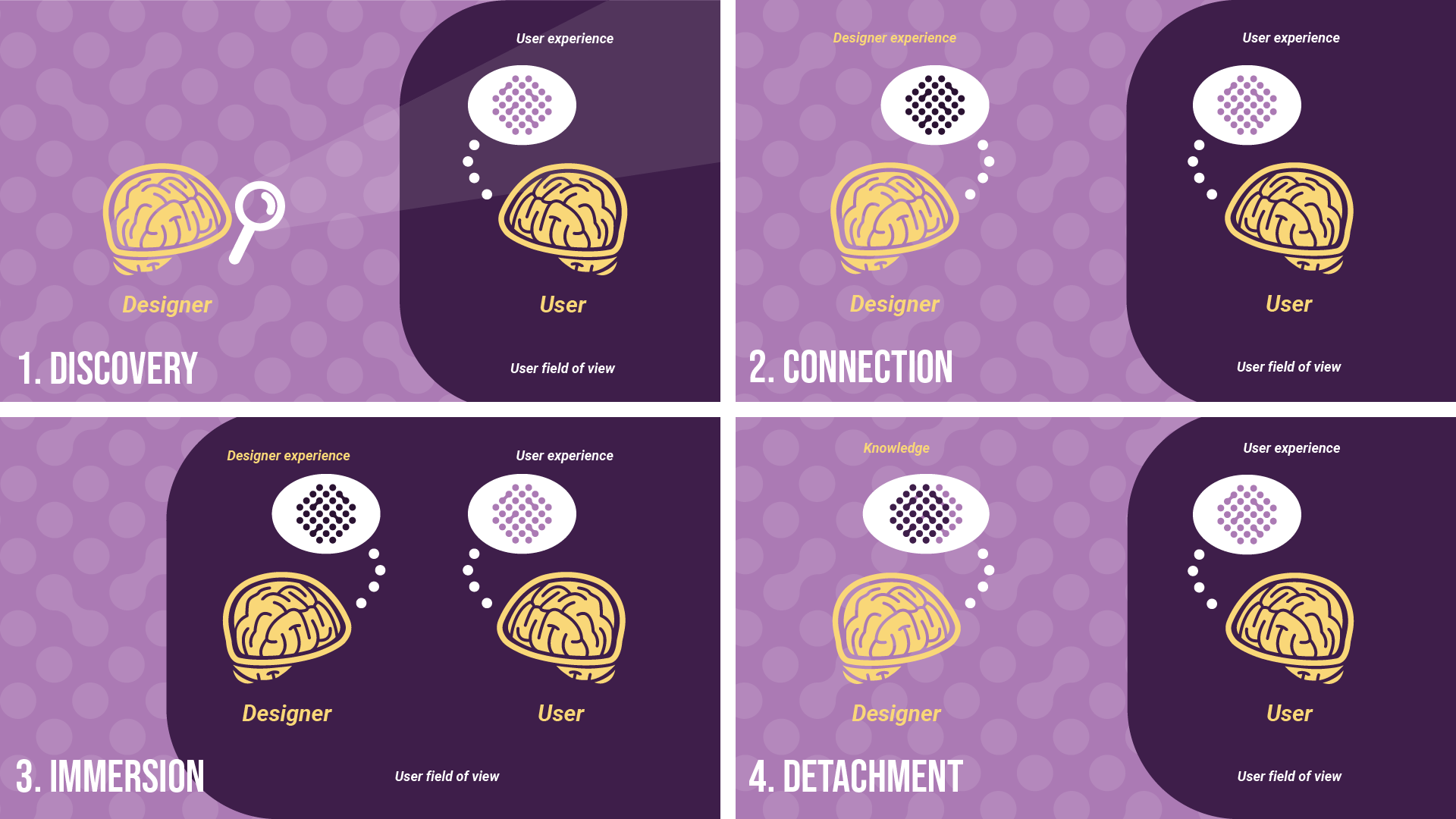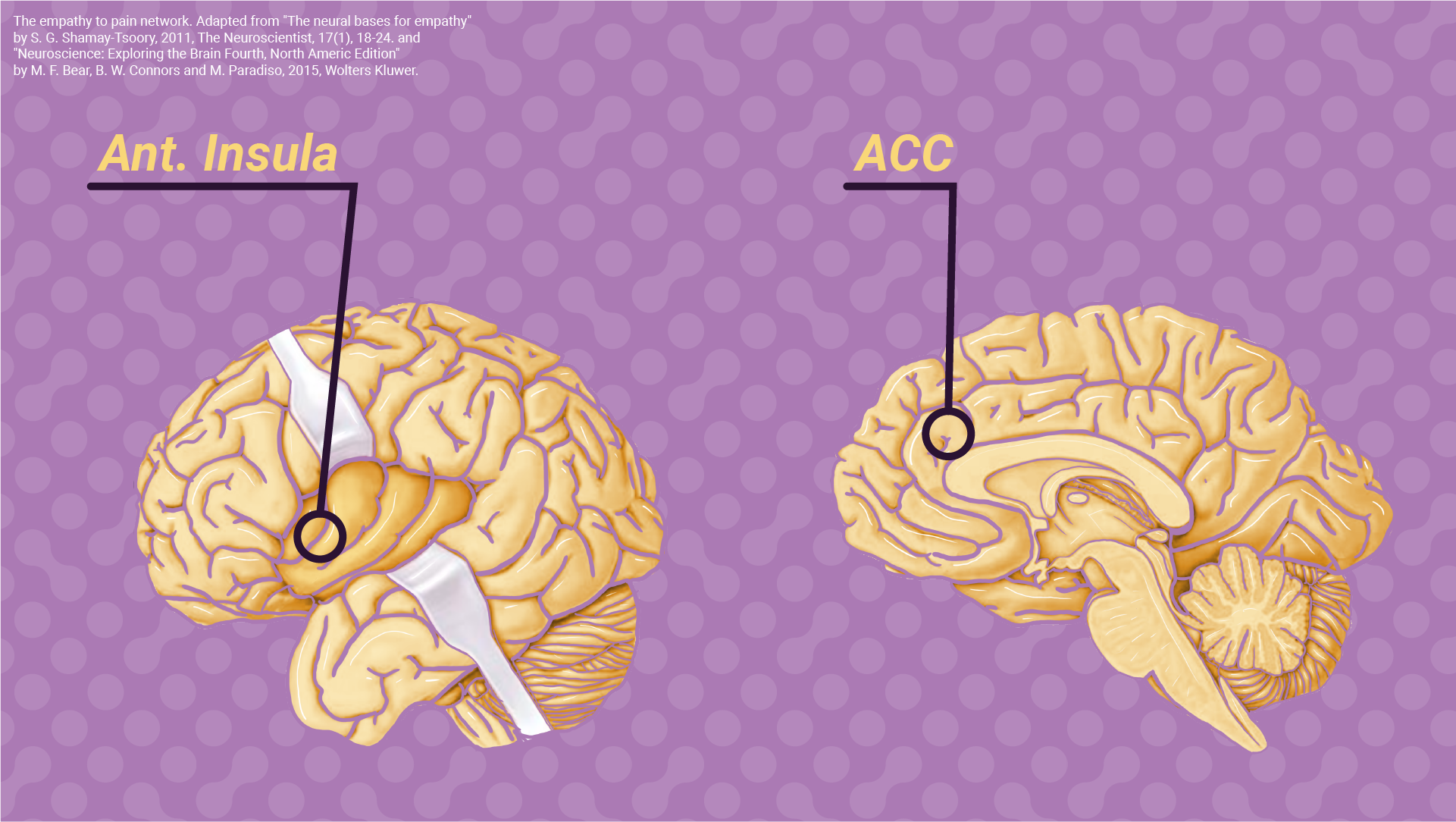Empathy is important. Empathy is a key skill in the future. Empathy is….What is it? And, what is it in technology and product development?
To answer this, we are only in the beginning of our project and the first months have been spent on forming a common understanding of what is this thing we call empathy. We looked into how it is understood in product design, psychology and neuroscience. Here is a summary of what we have found so far.
In design, especially design thinking or human centered design, such as that promoted by IDEO and Stanford D.School, empathy is a key phase in product design. We also actively teach our students to empathize with their users in the ME310 program. Empathy is considered a skill good designers have. Most commonly, empathy is believed to be accrued by spending time with the users, connecting with them and immersing in their experiences.

Studies agree that in order to develop successful products designers must use their own insight in combination with comprehensive user understanding.
An everyday system many of us are familiar with is a parking garage with automatic exit based on reading the license plate rather than a user reaching out the window to insert a ticket. This is a good example of how the developers understood the user experience. On the other hand, the less successful cases are even easier to find. Especially in technology. There are many digitized self-service systems that are confusing to use for many. Or, as an example, the new Helsinki region bus ticket reader has been criticized for being illogical and difficult to use and slowing down the commute due to creating lines for being slower than the old reader. Any time spent with users, observing them etc. could have resulted in a better system (read how a colleague’s students would have done it (in Finnish).
In summary, empathy in design is about understanding the user. Despite its relevance, there are two main issues concerning this term: there is no consensus on its definition; there are no clear measures of it and no research has truly tested whether empathy translates into improved design outcomes.
In psychology and neuroscience, on the other hand, “empathy” is generally understood as a dual capacity to understand someone else’s thoughts (cognitive empathy) and feelings (emotional empathy). Cognitive empathy is related to the capacity to imagine someone else’s thoughts and feelings in a given circumstance. That is, seeing the world from someone else’s psychological perspective and act accordingly based on that. Emotional empathy, on the other hand, is related to the capacity to react to someone else’s experiences. These reactions include recognizing emotions in facial expressions, experiencing similar emotions by contagion, manifesting a similar neuromotor reaction when observing someone else performing a goal-directed behavior (e.g. grabbing a glass) or experiencing similar pain reactions towards someone else’s pain. For example, try grinning at a random person, you will see them mirror your expression. Or watch this video, and you will cringe in empathy. Empathizing with the pain of others seems to recruit brain areas associated with the experience of one’s own pain (i.e. anterior cingulate cortex (ACC) and anterior insula (AI)). That is, it is “as if” we would be the ones experiencing the observed pain.

Despite this deep understanding, empathy is rather an umbrella term for many different concepts than one single phenomenon in psychology and neuroscience. There is no single concept to transfer directly to technology and product development.
In summary, we find empathy in design, psychology and neuroscience is about either being aware of the other’s thoughts and/or feelings, or feeling the other’s thoughts and feelings. We also find that empathy is most commonly thought of as a trait of a person i.e. a person is more or less empathic. This is, however, not enough to understand what is relevant empathy in technology and product development. In our project we are interested in the following:
- Which type of ‘empathy’ is relevant to design? Is it cognitive or emotional empathy, or something else?
- In product design empathy is targeted towards a particular user group, how is this different from the trait of empathy?
- How does empathy correlate with the actions taking during the project and finally the project outcomes?
- Can we increase empathy, especially the accuracy or empathic understanding and thus the corresponding actions?
Empathic engineers is a Technology Industries of Finland Centennial Foundation and Jane & Aatos Erkko Foundation funded Future Makers project for better empathic technology development.
 Aalto DF
Aalto DF